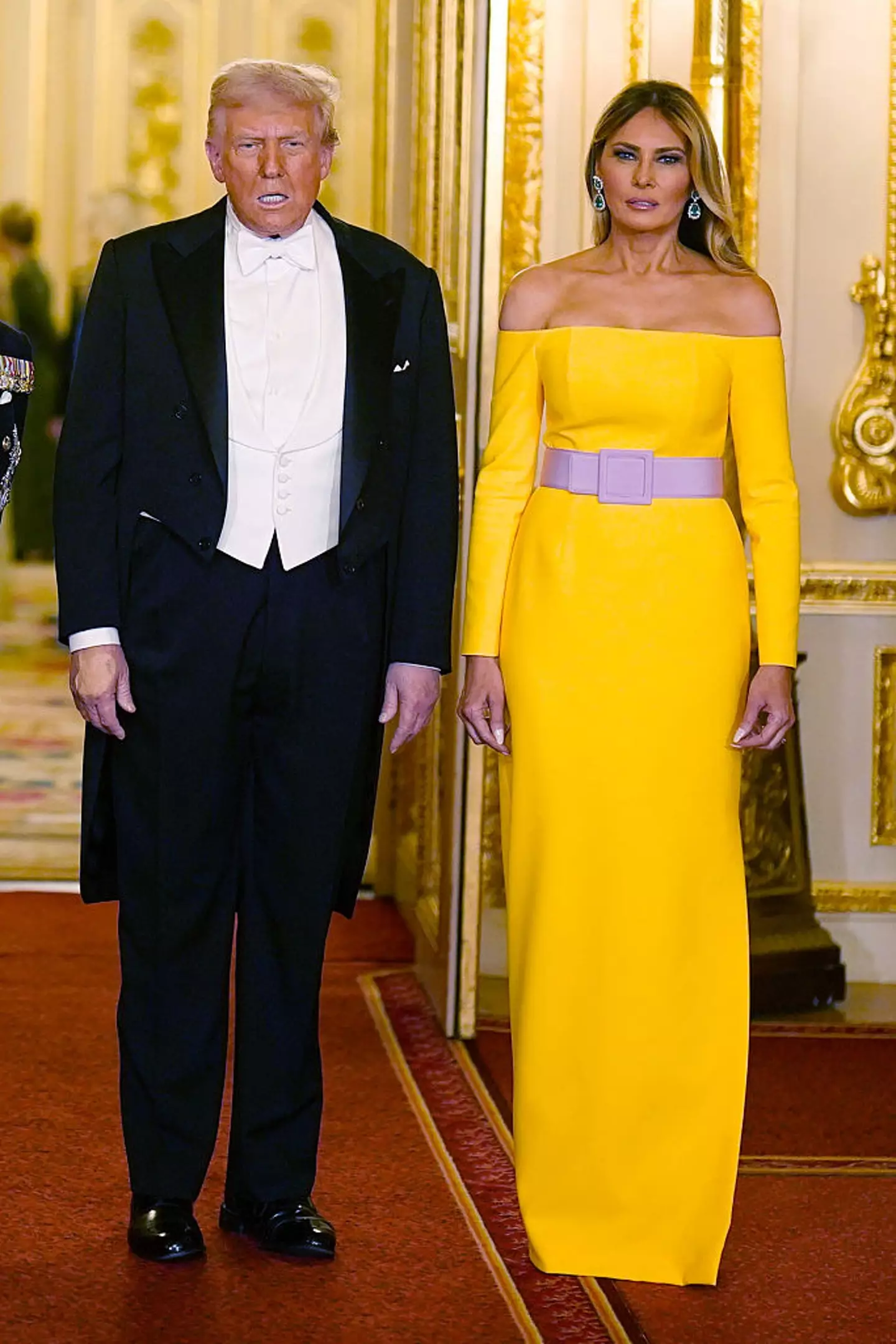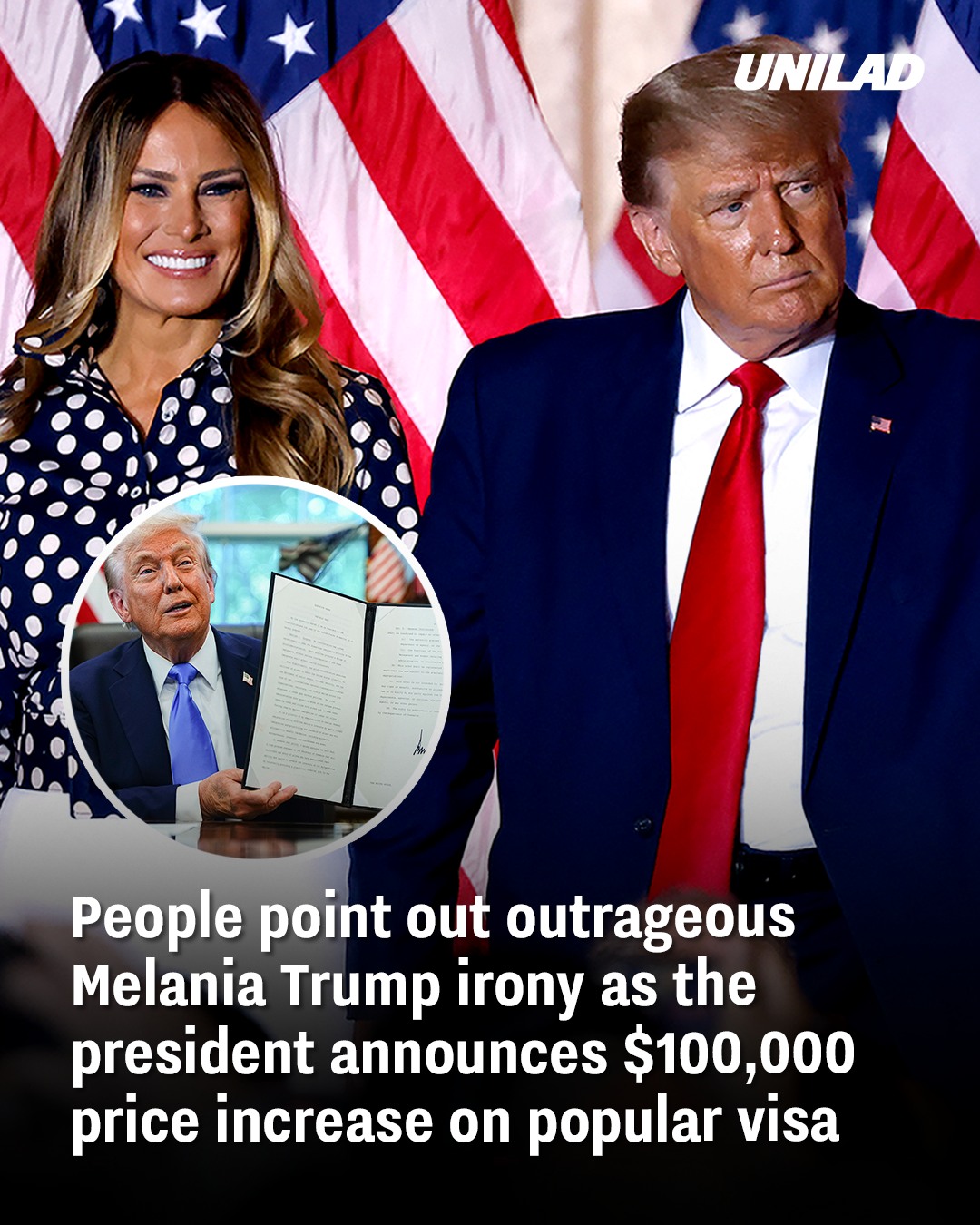In a move that has raised eyebrows across the political spectrum, President Donald Trump has announced a dramatic increase in the cost of the H-1B visa program, a popular route for skilled foreign workers to live and work in the United States. The visa fee is set to soar from $1,500 to an eye-watering $100,000 — a hike of more than 6,500%.
The H-1B visa, often granted to individuals in fields like science, engineering, and technology, has historically been a key tool for attracting global talent. Yet, the recent price surge has sparked widespread concern, especially among countries like India, which accounts for the majority of H-1B applicants. But it’s the irony of the move that’s captured the most attention: First Lady Melania Trump, who herself was a recipient of the same visa in 1996, is now at the center of the debate.
Melania Trump’s H-1B Visa: A Personal Connection
In 1996, Melania Knauss, a 26-year-old Slovenian model, came to the U.S. on an H-1B visa, a crucial stepping stone in her journey to become a U.S. citizen and eventually the First Lady. At the time, the visa cost was a modest $1,500. Two years later, Melania met Donald Trump, and they began dating shortly thereafter. A decade later, she was granted U.S. citizenship.
Had the new $100,000 fee been in place at the time, it’s unlikely that Melania would have been able to afford the visa to pursue her dreams of becoming a model in America. This has not gone unnoticed by social media users, who have pointed out the irony of the situation.
One Twitter user remarked, “Donald Trump just crushed the American Dream for Indians. H1B visa fees increased to annual charges of $100,000. The irony is, First Lady Melania Trump, also received an H-1B visa in October 1996 for modelling work. She was a Slovenian national. India, with a whopping 72% of all the H1B visa applicants, tops the list.”
Another user simply noted, “Didn’t Melania Trump come to America on a H-1B Visa?” highlighting the contradiction between Trump’s own policies and his wife’s history.
The Fee Increase and Trump’s Justification
Trump has defended the fee increase by citing widespread “abuse” of the H-1B system, claiming that foreign workers were taking jobs away from American workers. He believes that raising the fee will discourage misuse of the visa program.
US Commerce Secretary Howard Lutnick confirmed that the $100,000 fee will be paid annually for six years, which effectively means companies sponsoring H-1B workers will need to invest $600,000 over the course of the visa’s life. Lutnick also argued that businesses will now need to decide whether the employee is “valuable enough” to warrant such an expense, or whether they should “hire an American.”
The Impact of the Fee Hike
The decision to raise the visa fee will disproportionately impact workers in industries like tech, where large corporations such as Amazon, Microsoft, Meta, Apple, and Google are the largest users of the program. However, critics argue that many companies depend on the H-1B visa to fill highly specialized roles that domestic workers may not be qualified for.
What Does This Mean for Future Applicants?
The $100,000 price tag is only set to apply to new applicants, which raises questions about the long-term impact on global talent recruitment. The rise in cost could result in fewer qualified individuals coming to the U.S., thus limiting innovation in key sectors like technology and engineering.

President Donald Trump and First Lady Melania Trump pictured being hosted by King Charles III and members of the Royal Family at Windsor Castle (Aaron Chown-WPA Pool/Getty Images)
Conclusion: The Complexities of Trump’s Visa Policy
In a deeply ironic twist, Melania Trump’s own immigration journey highlights a stark contrast with her husband’s recent decision. The significant fee increase may make it harder for future generations of skilled workers to follow a similar path to the U.S., especially for those from countries that rely heavily on the program, like India. As the debate over the H-1B visa continues, the question remains: Who benefits from this policy shift?
For more on Trump’s policies and their impact on the U.S., check out these articles:

